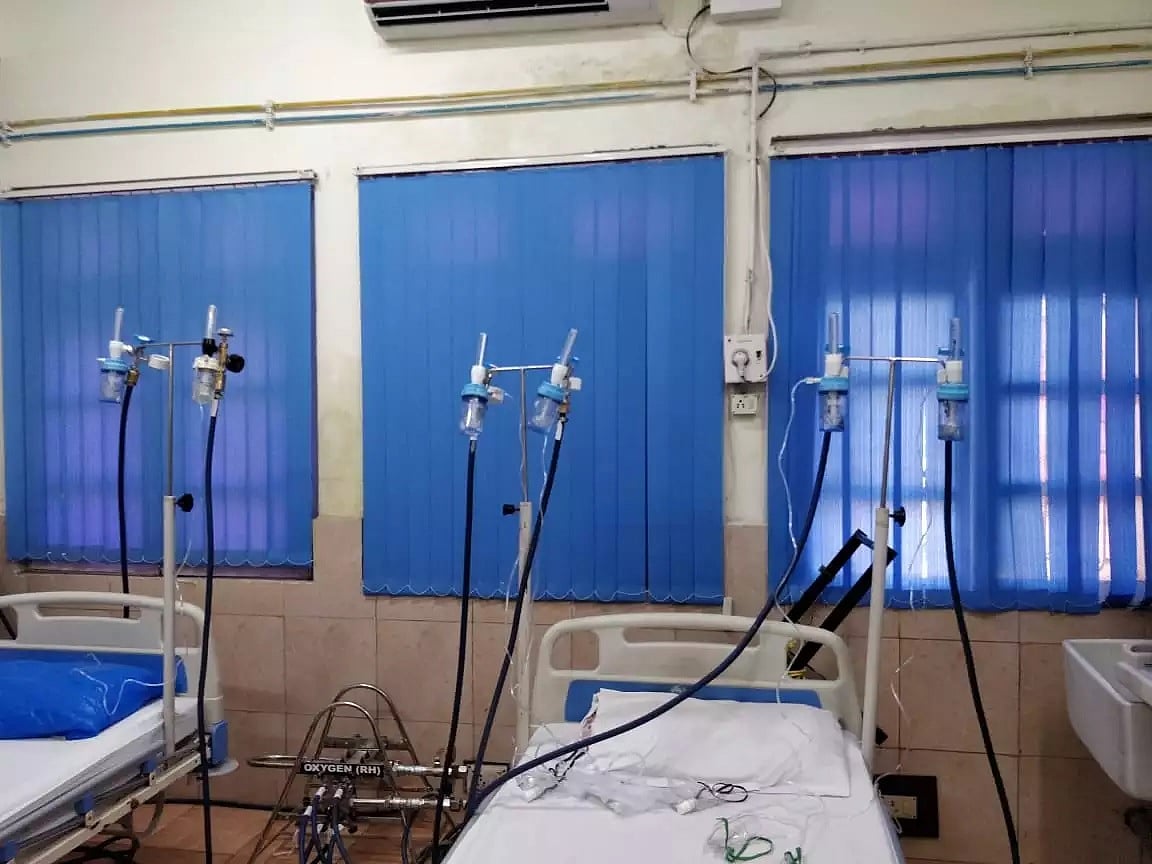Our recent history is replete with several instances of fires in hospitals, some originating in the intensive care units of Covid care hospitals. This article is an attempt to focus on the scientific cause of the fires, without getting into politics or management issues. Such incidents are happening not only in India but also elsewhere in the world. There are some simple precautions that could be taken to avert or reduce such occurrences.
We are all taught in primary school that air around us contains 21 per cent oxygen. When this oxygen content falls below 14 per cent, it is almost impossible for human beings to breathe. This is due to the simple principle of reduced partial pressure of oxygen in the air, which impacts the ability of our lungs to absorb it and supply it to our blood cells.
A similar phenomenon is also experienced at high altitudes, where even if the oxygen concentration is 21 per cent, the absolute pressure is much lower and the same difficulty arises. This is the reason that mountaineers need oxygen cylinders. This is a well-established fact and not rocket science.
Breathing support
Patients with impaired lung capacity as a result of illness therefore require oxygen support to breathe normally and to ensure supply of oxygen to all organs in need of it. Lack of oxygenation will eventually result in multiple organ failure and ultimately, death.
Now, let us look at the other side of the picture. If the oxygen content in the air increases beyond 23.5 per cent, flammability is increased significantly and the air becomes dangerous. This is again something we have all learnt at school – the laboratory demonstration in which a burning piece of coal placed in a jar of synthetic oxygen burns fiercely. The difference between normal combustion and this phenomenon is obvious.
To come to the point, the situation in Covid hospitals is similar. There is extensive use of oxygen to help patients breathe. Medical oxygen is a minimum of 93 per cent oxygen. Oxygen concentrations over 22 per cent can also help. Of course, this is a matter best decided by doctors and the rest of the medical fraternity, on a case-by-case basis. This writer does not wish to nor is competent to comment on aspects such as the oxygen content or the flow and pressure at which it is supplied to patients.
Closed environment
Consider the environment in any ICU, which is usually an air-conditioned, closed space for obvious reasons. Almost all patients with compromised lung function are being provided oxygen either through masks or in the worst-case scenario, through ventilators. One can only imagine what happens to the oxygen content in the environment of a closed room, where there is such extensive (necessary) use of oxygen.
If there is any sudden increase in oxygen concentration, there is bound to be the minutest of sparks in the electric circuit of the equipment in use, be it the air conditioning or any other electrical device. It is very likely this will result in a conflagration, which may prove hard to extinguish.
Does this mean there is no solution to the problem? Of course not. There are ways to avoid such tragedies. All electrical equipment, including simple switches, could be made fireproof, as is done in the chemical industry, where flammable chemical solvents are routinely handled. Such ‘flameproof’ equipment does not prevent sparks but contains it within a closed space, thus limiting the exposure and danger a spark could otherwise pose.
Safety measures
Further, it is a very simple matter to instal relatively inexpensive (less than Rs 15,000), small detectors in confined spaces in the ICUs or closed rooms where oxygen is being used, to monitor the oxygen content in the environment (these just have to be placed) and an alarm, if the oxygen content exceeds 23.5 per cent. In the event this limit is exceeded and ventilation is inadequate, forced ventilation again, with the use of simple equipment like blowers and exhausts have to be provided to reduce the danger of flammability.
These are some rational and logical inputs on a burning issue, which need to be considered from a practical standpoint and beyond the purview of politics and blame games.
The writer is President, UDCT Alumni Association, and an entrepreneur. Views are based on basic scientific facts.









